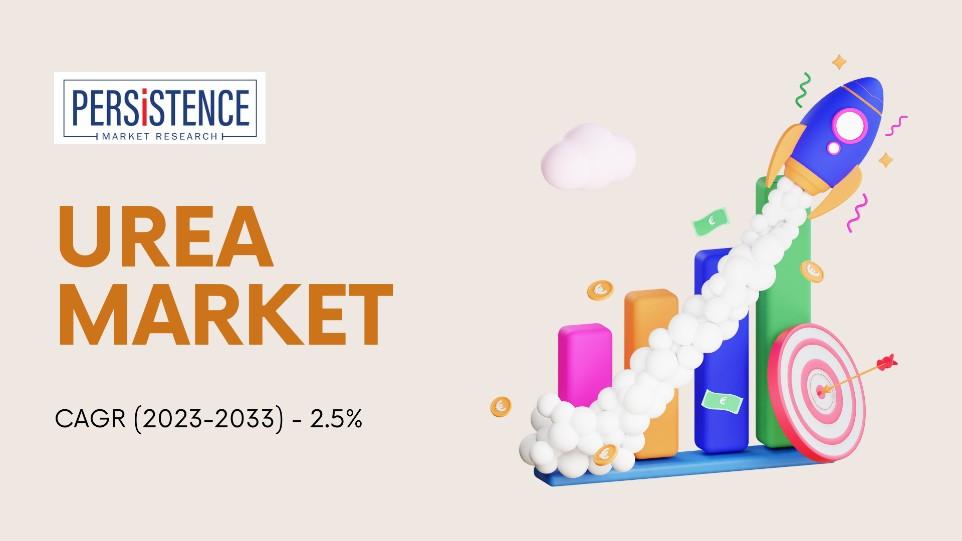What are the Major Marketing Strategies for Urea?
The global urea market is projected to grow from USD 32.46 billion in 2023 to USD 41.55 billion by 2033, with a CAGR of 2.5%. This growth is driven primarily by the high demand for fertilizers in the agricultural sector, supported by increasing food requirements due to population growth. Key markets in Asia Pacific, including China, India, and ASEAN countries, are expected to contribute significantly to this growth. While the market saw a slower CAGR of 1.4% from 2017 to 2022, recent geopolitical tensions and economic disruptions have impacted growth rates. Nonetheless, government subsidies and initiatives in various countries, like those in India, are expected to boost demand, particularly in South Asia, which will account for a significant portion of the global consumption increase.

Optimizing Market Reach and Enhancing Competitive Position
Marketing strategies for urea are crucial in a competitive industry where product differentiation and customer engagement play significant roles. Effective marketing strategies help companies capture market share, respond to regulatory and environmental trends, and cater to evolving consumer preferences. Here’s a comprehensive overview of major marketing strategies for urea:
1. Product Differentiation and Innovation
Enhanced-Efficiency Fertilizers (EEFs): Focus on marketing urea products with added benefits, such as coated or slow-release formulations, which offer improved nitrogen use efficiency and reduced environmental impact. Highlighting these features helps differentiate products from standard urea and appeals to environmentally conscious consumers.
Smart Fertilizers: Promote the benefits of smart fertilizers integrated with technologies like IoT, sensors, and data analytics. Emphasize how these products optimize nutrient application and improve crop yields, offering advanced solutions for precision agriculture.
2. Targeted Market Segmentation
Agricultural Sector Segmentation: Tailor marketing efforts to different segments within the agricultural sector, such as large-scale commercial farms, smallholder farms, and specialty crop producers. Customize messaging to address the specific needs and challenges of each segment.
Regional Market Focus: Adapt marketing strategies to regional needs and preferences. For example, in regions with high agricultural activity, emphasize high-yield and efficiency benefits, while in emerging markets, focus on affordability and availability.
3. Value Proposition and Benefits Communication
Performance and Efficiency: Clearly communicate the performance benefits of urea, such as increased crop yields, improved soil health, and better nutrient utilization. Use data and case studies to demonstrate the effectiveness of your products.
Environmental Benefits: Highlight environmental advantages, such as reduced nitrogen runoff and lower greenhouse gas emissions, especially for enhanced-efficiency and sustainable urea products. This appeals to customers who prioritize eco-friendly solutions.
4. Strategic Partnerships and Collaborations
Agri-Tech Companies: Collaborate with agri-tech companies to integrate urea products into precision agriculture solutions. Partnerships with technology providers can enhance product offerings and create additional value for customers.
Distribution Partners: Establish strong relationships with distributors, retailers, and agricultural cooperatives to expand market reach and ensure reliable product availability. Effective distribution partnerships can improve market penetration and customer access.
5. Educational and Training Programs
Farmer Education: Implement educational programs and workshops to inform farmers about the benefits and proper use of urea products. Providing training on best practices for application and handling can enhance customer satisfaction and loyalty.
Technical Support: Offer technical support and consultancy services to help customers optimize urea usage and address any issues. Providing expert advice and solutions builds trust and reinforces the value of your products.
6. Digital Marketing and Online Presence
Content Marketing: Utilize content marketing strategies, such as blogs, whitepapers, and case studies, to provide valuable information about urea products and their benefits. Share insights on agricultural trends, product innovations, and success stories.
Social Media and Online Advertising: Leverage social media platforms and online advertising to reach a broader audience and engage with potential customers. Use targeted ads and sponsored posts to promote urea products and drive traffic to your website.
E-commerce Platforms: Develop an e-commerce presence to facilitate online ordering and purchasing of urea products. Offer a user-friendly interface, detailed product information, and customer reviews to enhance the online buying experience.
7. Competitive Pricing and Promotions
Pricing Strategies: Implement competitive pricing strategies to attract price-sensitive customers while maintaining profitability. Consider offering volume discounts, loyalty programs, or promotional pricing to incentivize purchases.
Seasonal Promotions: Run seasonal promotions and discounts aligned with planting and harvesting cycles. Timely promotions can drive sales and increase market share during peak agricultural seasons.
8. Sustainability and Corporate Responsibility
Green Initiatives: Promote sustainability initiatives and corporate responsibility efforts, such as reducing carbon footprints, implementing eco-friendly production practices, and supporting community projects. Demonstrating commitment to sustainability can enhance brand reputation and appeal to environmentally conscious customers.
Certifications and Standards: Obtain and showcase certifications related to environmental standards and quality assurance. Certifications can build credibility and trust with customers, reinforcing the commitment to high-quality and sustainable products.
9. Market Research and Customer Feedback
Customer Insights: Conduct market research to understand customer needs, preferences, and pain points. Use customer feedback to refine marketing strategies, improve product offerings, and address any issues.
Competitive Analysis: Monitor competitor strategies and market trends to stay informed about industry developments and adjust marketing tactics accordingly. Staying ahead of the competition requires a proactive approach to market intelligence and strategy adaptation.
10. Branding and Messaging
Brand Positioning: Develop a strong brand identity and positioning that resonates with target customers. Create a compelling brand story and messaging that highlights the unique value propositions of your urea products.
Consistency and Recognition: Ensure consistent branding across all marketing channels and touchpoints. Building brand recognition and maintaining a cohesive brand image helps reinforce trust and loyalty among customers.
Conclusion
Effective marketing strategies for urea involve a combination of product differentiation, targeted communication, strategic partnerships, and digital engagement. By focusing on innovation, customer education, and sustainability, companies can enhance their market presence and drive growth in the competitive urea industry. Adapting to market trends and customer needs while leveraging strategic marketing tactics will be key to achieving long-term success.
